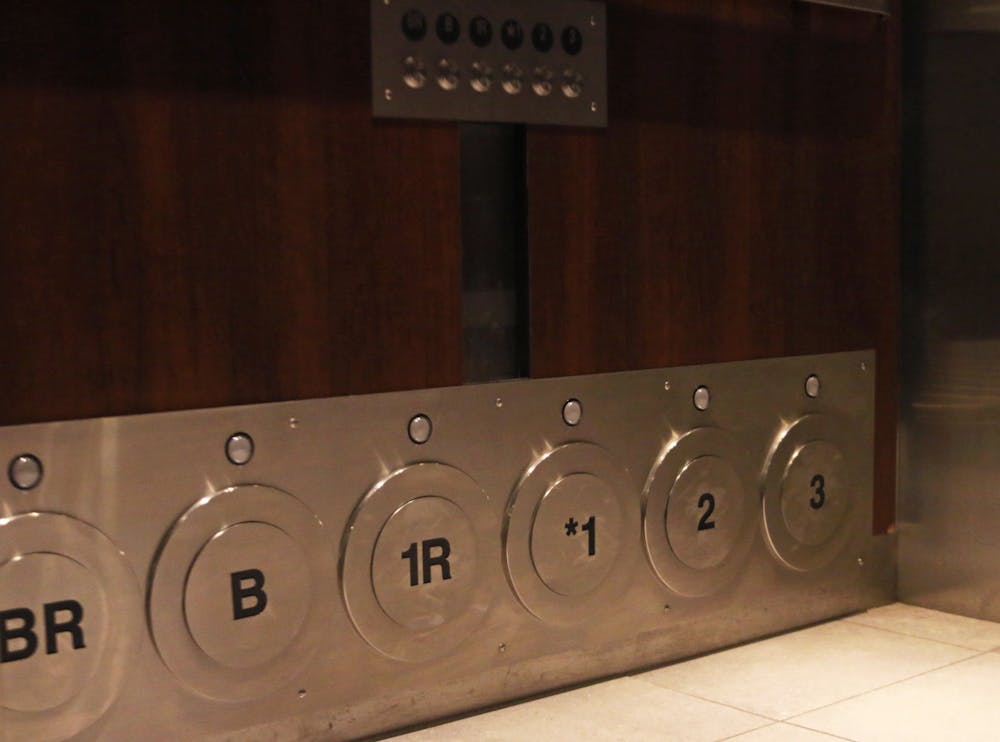Miami University students and staff using wheelchairs may now have an easier time navigating Armstrong.
Over winter break, an elevator inside the Armstrong Student Center (ASC) became more accessible with new buttons installed on floor panels both inside and outside the elevator.
The renovations were made after the 2017 addition of similar features in the Shriver Center. The additions cost just under $100,000 total and were paid using Armstrong’s budget for improvement projects.
“These types of improvements are important to college campuses and beyond to show examples of universal design and a commitment to accessibility and inclusion for people of all abilities,” said Dan Darkow, coordinator of the Miller Center for Student Disability Services. “The floor control buttons offer a solution for people who have their hands full or for those conscious of touching high-traffic surfaces with an alternative way to access elevator controls.”
The Miller Center is a place for Miami students to obtain services and accommodations for equal access at the university. The Miller Center and Armstrong teamed up to begin the elevator project in the fall of 2018. These two buildings are the first to receive these updates to cater to the number of guests who tour those buildings.
The additions aim to help Miami move toward universal design and inclusivity. Universal design is a set of design principles with the goal of accommodating as many people as possible, regardless of physical or cognitive abilities, said Robert Bell, interim university architect and director of planning, architecture and engineering.
“Social sustainability is becoming more of a conscious discussion,” Bell said, “and universal design plays into that and just making spaces usable by more people helps with that social sustainability as well.”
Social sustainability is the ability of a community to develop processes and structures meeting the needs of its current members as well as support future generations, according to Business Dictionary.
Katie Wilson, director of the Armstrong Student Center, said that while the building meets Americans with Disabilities Act (ADA) standards, Miami wants to bridge the gap between ADA compliance and universal design.
“It’s part of the overall support that we provide for students to be successful,” Wilson said. “We want it to be welcoming, accessible and friendly to all. That requires us to go above and beyond.”
Other future accessibility updates in Armstrong include reflective strips along the edge of stairs to create contrast for people who have limited visibility.
Enjoy what you're reading?
Signup for our newsletter
“Being able to use these enhanced access features has been a great feeling and provides an increased level of independence as I navigate through my day,” said Darkow, who is a wheelchair user.
For more information about accessibility at Miami, visit the website for Miami’s Miller Center for Student Disability Services.




